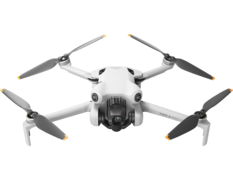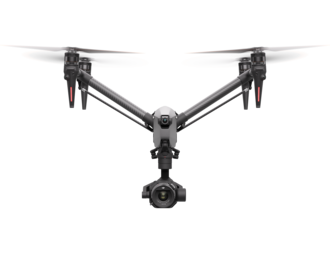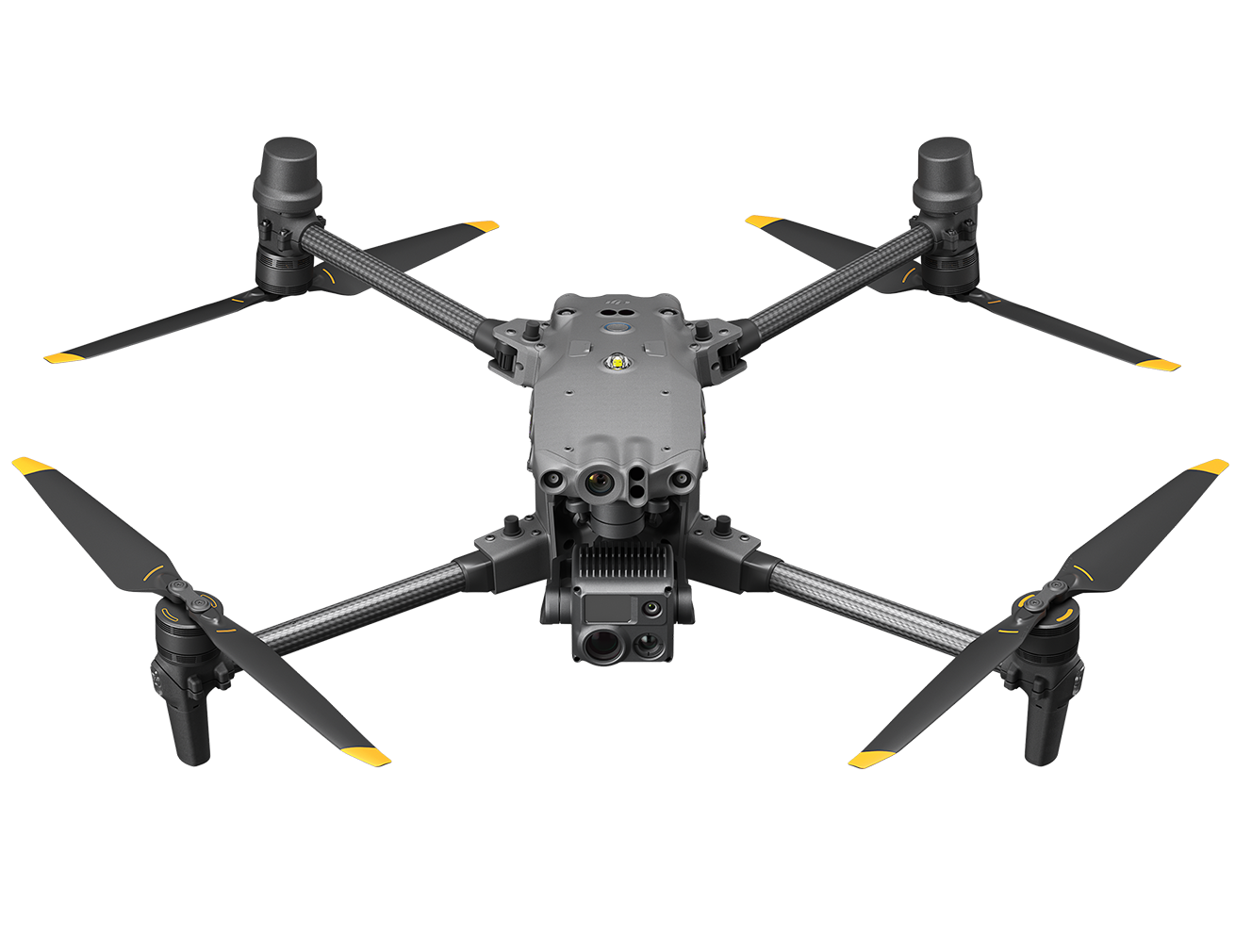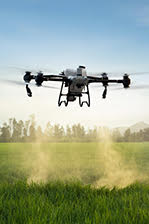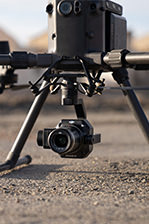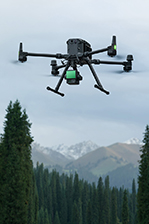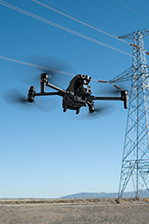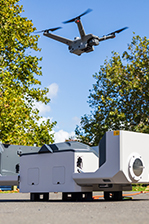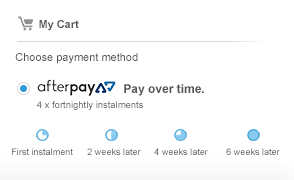DJI Osmo Nano Standard Combo (64GB)
Own the Moment
Lightweight and ready for anything, Osmo Nano lets you capture life’s moments effortlessly, wherever your day takes you. From cycling and running to epic adventures and everyday moments, Osmo Nano delivers crisp, vivid footage that brings every memory to life. Its sleek, magnetic design unlocks bold, new, hands-free shooting angles, helping you tell your story like never before.
Key Features
All-New 1/1.3″ Sensor
4K/60fps
143° Wide FOV
Lightweight, Dual-Sided Magnetic Design [1]
10-bit & D-Log M Color Performance
200-Min Extended Battery Life [2] & Fast Charging
Live View With Remote Control & Swift Content Transfer
OsmoAudio™ Direct Microphone Connection [3]
10m Waterproof Camera [4], IPX4-Rated Vision Dock [5]
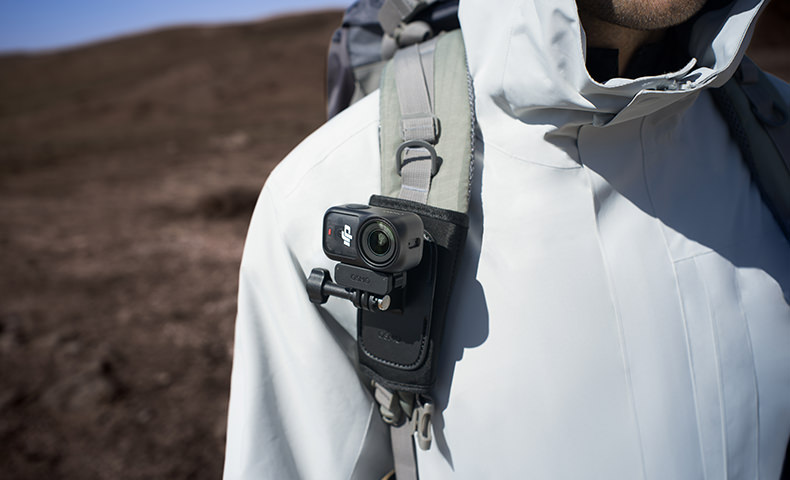
Ultra-Lightweight, Effortlessly Wearable
With its ultra-compact design, dual-sided magnetic mounting [1] and versatile accessory options, Osmo Nano can be flexibly mounted in various positions, allowing you to discover creative shooting angles beyond imagination — empowering you with creative freedom.
Image Quality Beyond Imagination
Next-Gen 1/1.3″ Sensor
Equipped with a 1/1.3-inch sensor and a high-performance image processor, Osmo Nano offers up to 13.5 stops of dynamic range, capturing visuals on par with professional cameras. This powerful imaging performance delivers crisp, detailed shots in both low light and bright sunlight effortlessly.
2.4 μm Pixel Size [6]
13.5 stops Max Dynamic Range [6]
Professional Imaging Without Compromise
Small and lightweight, yet remarkably powerful — Osmo Nano lets you shoot with ease. Capture every moment in crisp detail with up to 4K/60fps video and 4K/120fps slow motion.
143° Wide-Angle Lens. Capture More
Whether you’re capturing action sports, travel landscapes or everyday highlights, Osmo Nano’s 143° ultra-wide field of view helps you fit more into every frame, making your memories more complete.
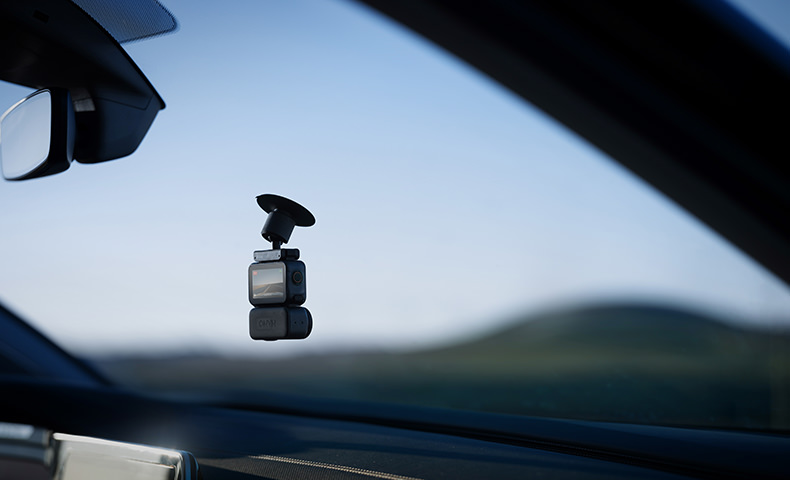
10-bit & D-Log M Color Performance
Effortlessly capture over a billion colors with stunning detail in both highlights and shadows. Whether shooting in high dynamic range or complex color environments, Osmo Nano preserves rich color and brightness information, giving you greater flexibility for post-production and creative editing.
SuperNight Mode
In low light conditions, Osmo Nano's SuperNight mode [16] enhances image quality with noise reduction algorithms.
Two Stabilization Modes for Cinematic Results
HorizonBalancing
HorizonBalancing corrects horizon tilts within a ±30° range and supports video recording up to 4K/60fps.
RockSteady 3.0
This mode effectively reduces camera shake while preserving the intensity and impact of movement, delivering an immersive first-person perspective. Supports up to 4K/60fps video recording.

Versatile Design, Ready for Every Shot
Multifunctional Vision Dock
Live View with Remote Control
The magnetic design allows the camera to be mounted in either direction, making it easy to switch between selfies and shooting others. Enjoy real-time viewing and remote control at your fingertips with the built-in OLED HD touchscreen.
Fast Charging & Long Operating Time
The Multifunctional Vision Dock supports fast charging for both the camera and itself. When charging the main camera, it only takes 20 minutes to reach 80% battery level [7]. When attached to the camera and fully charged, the setup can record up to 200 minutes of 1080p/24fps video [2].
90 min [2] Main Camera 1080p Runtime
60 min [2] Main Camera 4K Runtime
Multiple Options for Swift Content Transfer
Osmo Nano features high-speed contact points compatible with the USB 3.1 protocol. Connect to mobile devices or computers using a PD fast-charging cable for lightning-fast transfers up to 600 MB/s [8]. The Multifunctional Vision Dock also includes a built-in microSD card slot for quick footage export with a single tap [9].
Ready for Water, Ready for Adventure
The camera is waterproof up to 10 meters [4] without any additional housing, making it ideal for underwater shooting. When paired with the Multifunctional Vision Dock, it offers IPX4-rated splash resistance [5], protecting against sweat, rain, and minor splashes. Confidently capture exciting water sports and outdoor adventures with greater peace of mind.
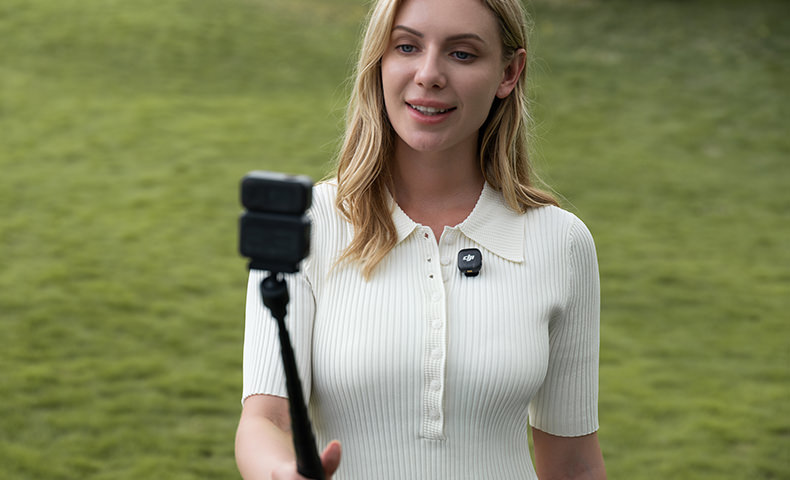
Multiple Audio Options for Premium Sound Quality
OsmoAudio™ Direct Microphone Connection
Connect up to two microphone transmitters directly [3]—no receiver needed—to capture two audio sources simultaneously in a single recording [10]. Whether you’re stationary or on the go, the DJI OsmoAudio™ ecosystem ensures studio-quality sound for every scene.
Click to listen
Stereo Recording
The compact body features dual built-in microphones for stereo recording, delivering clear, vivid audio for an immersive first-person audiovisual experience.
Creative Freedom with Flexible Shooting Modes
Horizontal & Vertical Shooting [11]
Effortlessly switch between horizontal and vertical shooting for flexible composition to suit different scenes and sharing needs [11].
Auto Recording
Set shooting intervals and clip durations for automatic recording with Osmo Nano, while DJI Mimo helps you create standout videos.
Nod/Pat Recording
Start shooting with nodding/patting gestures in auto recording mode.
Pre-Rec
Set a pre-recording duration to automatically save footage from just before you press the record button, ensuring you never miss a key moment.
Seamless Editing with DJI Mimo
Once Osmo Nano is wirelessly connected, preview your footage in real time and adjust settings easily. The DJI Mimo app offers a variety of built-in editing templates and one-tap video creation, producing polished videos quickly and effortlessly.
Learn More About DJI Mimo: https://www.dji.com/mimo
One-Tap Editing
The DJI Mimo app offers a wide range of templates and sound effects, making it easy to edit, create, and share your videos all in one place.
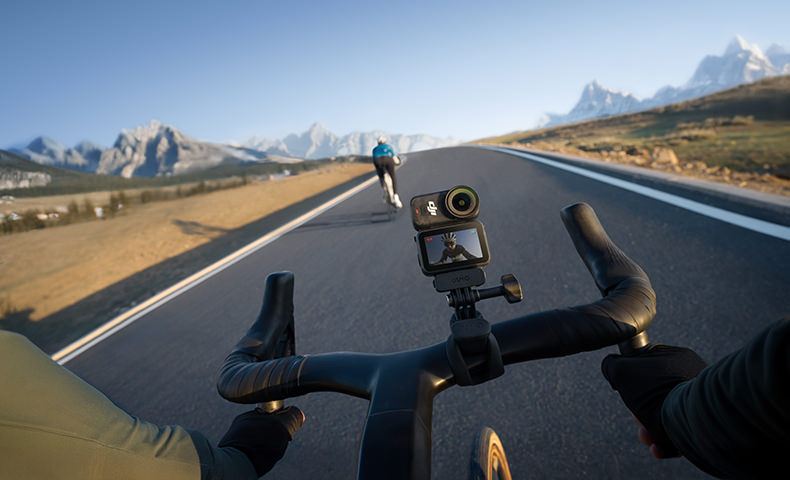
Sports Dashboard
Enhance your activity videos with real-time performance data. Sync data from devices like Apple Watch [12], Garmin, Magene, iGPSPORT, Suunto, and COROS, or import third-party FIT files. Showcase your workout stats dynamically on screen.
* Apple Watch data import is supported on iOS devices only.
Wi-Fi 6.0 High-Speed Transfer
Enjoy wireless export speeds of up to 80MB/s [13], allowing you to quickly transfer your footage to your smartphone or other mobile devices.
Pro Filters
Choose from three stylish Pro filters. With just one tap, apply DJI’s exclusive color presets to give your footage a cinematic look.
Live Photos
Capture a 3-second highlight with just a few taps and instantly create vivid live photos that bring every memorable moment to life [14].
Glamour Effects 2.0
Activate Glamour Effects on Osmo Nano and download footage via the DJI Mimo app for automatic beautification.
Notes
1. The Osmo Nano Camera's dual-sided magnetic feature is only compatible with surfaces that are magnetic or can be attracted by magnets.
2. The main camera can operate for up to 90 minutes on its own. When connected to the Multifunctional Vision Dock, the operating time can extend to up to 200 minutes. Both battery life and Endurance mode durations were measured at 25°C room temperature with RockSteady stabilization enabled, Wi-Fi disabled, and the screen turned off. The 90-minute runtime refers to the maximum recording time of the main camera when shooting 1080p/24fps (16:9) video, while the 60-minute runtime refers to the maximum recording time in Endurance mode when shooting 4K/30fps (16:9) video. Actual operating time may vary based on device settings, usage, and environmental factors. Data was collected in a controlled environment and should be taken as reference only.
3. Direct connection to the first-generation DJI Mic is not supported. DJI microphones are sold separately.
4. Before use, tighten the Glass Lens Cover. It is not recommended to use the camera body only for long-term underwater shooting or in environments with high water impact pressure. Do not use the camera in hot springs or extreme underwater environments, or let it come into contact with corrosive or unknown liquids.
5. IPX4 water resistance is only available when the Multifunctional Vision Dock is attached to the camera.
6. Measured in a laboratory environment at 4K/30fps resolution, D-Log M color mode, and ISO 100 settings. Data is for reference only. Actual results may vary depending on shooting conditions and device settings.
7. Measured in a laboratory environment at 25°C using a USB-C charger that supports the standard PD3.0 protocol with a maximum PD output power of 30W or above, with the photo and video functions turned off and the screen off.
8. To achieve a 600MB/s transfer speed, use the 128GB version of Osmo Nano with the included USB-C to USB-C PD cable (USB 3.1), and transfer data from the camera's built-in storage. The 64GB version of Osmo Nano supports transfer speeds of up to 400MB/s. Make sure your computer supports USB 3.1 high-speed transfers; actual transfer speeds may vary depending on the computer model.
9. The microSD card must be purchased separately, and the actual export rate depends on the read/write speed of the microSD card.
10. When Osmo Nano is connected with one or two wireless microphone transmitters, only the operation menu is available to ensure audio quality; live view is not supported.
11. Horizontal and vertical shooting cannot be switched during recording. Please select your desired orientation before you begin shooting.
12. Apple Watch data import is supported on iOS devices only.
13. In an interference-free environment, the wireless transfer speed of photos/videos stored in the built-in storage can reach up to 80 MB/s, while that of photos/videos stored on the microSD card can reach up to 50 MB/s.
14. Live photos are supported on iOS and on Android devices that support third-party live photo synthesis. Please check compatibility according to your device model and system version.
15. Recommended for use in static scenarios. The ideal attachment temperature range of the base is -10°C to 40°C (14°F to 104°F). Do not attach to curved surfaces, and ensure the attachment surface is clean. Press down on the attachment for 10 seconds after applying and wait 30 minutes before use.
16. SuperNight mode only supports 8-bit color depth and frame rates up to 30fps. It does not support the 4:3 aspect ratio.
Product Specifications
General
Dimensions: Camera: 57.3×29.5×28 mm (L×W×H)
Multifunctional Vision Dock: 59.1×42.2×22.3 mm (L×W×H)
Weight: Camera: 52 g
Multifunctional Vision Dock: 72 g
Waterproof: Camera: up to 10 m
Camera + Multifunctional Vision Dock: IPX4 water resistance
Before use, tighten the Glass Lens Cover. It is not recommended to use the camera body only for long-term underwater shooting or in environments with high water impact pressure. Do not use the camera in hot springs or extreme underwater environments, or let it come into contact with corrosive or unknown liquids.
Number of Microphones: 2
Touchscreen: Dimensions: 1.96 inches, 326 ppi
Resolution: 314×556
Maximum Brightness (typical): 800 cd/㎡
Supported SD Cards: microSD (up to 1 TB)
Recommended microSD Cards: Recommended Models:
Lexar SILVER PLUS 64GB U3 A2 V30 microSDXC
Lexar SILVER PLUS 128GB U3 A2 V30 microSDXC
Lexar SILVER PLUS 256GB U3 A2 V30 microSDXC
Lexar SILVER PLUS 512GB U3 A2 V30 microSDXC
Lexar SILVER PLUS 1TB U3 A2 V30 microSDXC
Kingston Canvas Go! Plus 64GB U3 A2 V30 microSDXC
Kingston Canvas Go! Plus 128GB U3 A2 V30 microSDXC
Kingston Canvas Go! Plus 256GB U3 A2 V30 microSDXC
Kingston Canvas Go! Plus 512GB U3 A2 V30 microSDXC
Kingston Canvas Go! Plus 1TB U3 A2 V30 microSDXC
Camera
Sensor: 1/1.3″ CMOS
Lens: FOV: 143°
Aperture: f/2.8
Focus Range: 0.35 m to ∞
ISO Range: Photo: 100-25600
Video: 100-25600
Electronic Shutter Speed: Photo: 1/8000-30 s
Video: 1/8000s to the limit of frames per second
Max Photo Resolution: 6880 × 5160
Still Photography Modes: Single: Approx. 35 MP
Countdown: Off/0.5/1/2/3/5/10 s
Burst: Up to 30 images/3 s
Video: 4K (4:3): 3840 × 2880@24/25/30/48/50fps
4K (16:9): 3840 × 2160@24/25/30/48/50/60fps
2.7K (4:3): 2688 × 2016@24/25/30/48/50/60fps
2.7K (16:9): 2688 × 1512@24/25/30/48/50/60fps
1080p (4:3): 1920 × 1440@24/25/30/48/50/60fps
1080p (16:9): 1920 × 1080@24/25/30/48/50/60fps
Slow Motion: 4K: 4x (120fps)
2.7K: 4x (120fps)
1080p: 8x (240fps), 4x (120fps)
Hyperlapse: 4K/2.7K/1080p@25/30fps: Auto/×2/×5/×10/×15/×30
Timelapse: 4K/2.7K/1080p@25/30fps
Intervals: 0.5/1/2/3/4/5/6/8/10/15/20/25/30/40 s, 1/2/5/30/60 mins
Duration: 5/10/20/30 mins, 1/2/3/5 hours, ∞
Stabilization: EIS:
RockSteady 3.0
HorizonBalancing
EIS is not supported in Slow Motion and Timelapse modes. HorizonBalancing is only available when the video resolution is 1080p (16:9), 2.7K (16:9), or 4K (16:9) with a frame rate of 60fps or below.
Pre-Rec: Pre-Recording Duration: 5/10/15/30 s, 1/2/5 mins
Max Video Bitrate: 120 Mbps
Supported File System: exFAT
Photo Format: JPEG/RAW
Video Format: MP4 (HEVC)
Built-in Storage Capacity: Built-in storage 64GB version: 48GB available storage
Built-in storage 128GB version: 107.6GB available storage
The storage capacity can be expanded by inserting a microSD card.
Audio Recording: 48 kHz 16-bit; AAC
Battery
Type: Camera: Li-ion 1S
Multifunctional Vision Dock: Li-ion 1S
Capacity: Camera: 530 mAh
Multifunctional Vision Dock: 1300 mAh
Energy: Camera: 2.041 Wh
Multifunctional Vision Dock: 5.031 Wh
Voltage: Camera: 3.85 V
Multifunctional Vision Dock: 3.87 V
Operating Temperature: -20° to 45° C (-4° to 113° F)
Charging Temperature: 5° to 40° C (41° to 104° F)
Operating Time: Camera: 90 mins
Camera + Multifunctional Vision Dock: 200 mins
Tested at 25°C room temperature while recording 1080p/24fps (16:9) video, with RockSteady stabilization enabled, Wi-Fi disabled, and the screen turned off. Actual operating time may vary based on device settings, usage, and environmental factors. Data was collected in a controlled environment and should be taken as reference only.
Connection
Wi-Fi Operating Frequency: 2.400-2.4835 GHz
5.725-5.850 GHz
Wi-Fi Protocol: Wi-Fi 6.0
802.11 a/b/g/n/ac/ax
Wi-Fi Transmitter Power (EIRP): 2.4 GHz: < 23 dBm (FCC), < 20 dBm (CE/SRRC/MIC)
5.8 GHz: < 23 dBm (FCC/SRRC), < 14 dBm (CE)
Bluetooth Operating Frequency: 2.400-2.4835 GHz
Bluetooth Transmitter Power (EIRP): Camera: < 13 dBm
Multifunctional Vision Dock: < 10 dBm
Bluetooth Protocol: Camera: BLE 5.1
Multifunctional Vision Dock: BLE 5.4
In the box
Osmo Nano Camera (64GB) × 1
Osmo Nano Multifunctional Vision Dock × 1
Osmo Nano Magnetic Hat Clip × 1
Osmo Nano Magnetic Lanyard × 1
Osmo Nano Protective Case × 1
USB-C to USB-C PD Cable (USB 3.1) × 1
Osmo Nano Dual-Direction Magnetic Ball-Joint Adapter Mount × 1
DJI Logo Sticker × 1
Quick Start Guide × 1
Disclaimer × 1
Warranty Card × 1
WHY BUY FROM US?
By buying from Ferntech, you'll have the confidence that you are dealing directly with New Zealand's leading drone experts. Our staff are knowledgable drone pilots who offer expert advice, trusted support and superior specialist service. Only through us will you receive a full New Zealand warranty, phone and email support, and access to our certified Repairs Centre with DJI-qualified drone technicians. And we guarantee that we will have the best prices on the market — if not let us know and we will match any price (conditions apply).
Warranty Details
1 year warranty
Camera
What is the size of the image sensor in Osmo Nano?
Osmo Nano is equipped with a new generation 1/1.3-inch CMOS sensor, which offers an enhanced dynamic range of up to 13.5 stops. It supports up to 4K/60fps high-dynamic imaging and 4K/120fps slow motion recording.
What resolution settings does Osmo Nano support?
4K (4:3): 3840 × 2880@24/25/30/48/50fps
4K (16:9): 3840 × 2160@24/25/30/48/50/60fps
2.7K (4:3): 2688 × 2016@24/25/30/48/50/60fps
2.7K (16:9): 2688 × 1512@24/25/30/48/50/60fps
1080p (4:3): 1920 × 1440@24/25/30/48/50/60fps
1080p (16:9): 1920 × 1080@24/25/30/48/50/60fps
What video formats does Osmo Nano support?
MP4 (HEVC).
Does Osmo Nano support distortion correction?
Yes. On the recording specifications page, tap the RS|Wide icon in the upper right corner to switch the FOV to Standard (Dewarp).
Can I save original photos from Timelapse?
Yes. Photos from Timelapse can be downloaded and viewed on a computer. Specific operation steps: In Timelapse mode, tap the settings icon on the right side of the screen, and switch the [Format] option to "Video+JPEG" or "Video+RAW."
What is RockSteady 3.0?
Osmo Nano uses RockSteady 3.0 technology to stabilize footage. This Electronic Image Stabilization (EIS) technology is realized by increasing the shutter speed, analyzing the images captured by the CMOS sensor, and compensating by cutting off the edges of these images. In this way, multiple frames are overlaid and finally combined into a single frame that is sharp, clear, and accurately exposed.
What is D-Log M color mode of Osmo Nano?
It is designed to capture a wide dynamic range from the sensor, and colors are distributed evenly so the dark parts of a picture are greatly improved. It is not a real LUT, but a lower-contrast video with a flat color profile, great for post-processing options.
How to export photos and videos from Osmo Nano?
There are four options available:
1. Connect to the DJI Mimo app and download content from the microSD card and built-in storage to your smartphone.
2. You can insert a microSD card into the Multifunctional Vision Dock and follow the on-screen instructions to pair the Camera with the Vision Dock, exporting the Camera's content to the microSD card. Then use a card reader to export content from the microSD card to your computer or smartphone.
3. Attach the Vision Dock to the camera and connect it to a computer using a data cable. Select the storage location on the camera screen, then export content to the computer.
4. Attach the Vision Dock to the camera. Swipe down to access the settings menu and select "USB Mode"*. Connect Osmo Nano to a smartphone with a USB-C port using a USB-C cable. Then you can export content from the microSD card and built-in storage to your phone.
* Osmo Nano must be updated to the latest firmware.
Where is the footage saved in Osmo Nano?
It is saved in the camera's built-in storage. Osmo Nano does not support recording content directly onto the microSD card in the Multifunctional Vision Dock.
What is HorizonBalancing, and what shooting specification modes does it support?
HorizonBalancing corrects the tilt horizontally within ±30° and supports recording stable 4K/60fps HD videos.
HorizonBalancing supports video shooting specifications of 1080p (16:9)@24/25/30/48/50/60fps, 2.7K (16:9)@24/25/30/48/50/60fps, and 4K (16:9)@24/25/30/48/50/60fps.
How do I use the auto recording function?
When Auto Recording is enabled, the camera can automatically start recording from a powered-off state through preset actions or intervals and clip durations. For detailed instructions, you can check A Beginner's Guide to DJI Osmo Nano, which includes tutorials, user manuals, and comprehensive instructions covering unboxing, setup, activation, and device connection.
Does Osmo Nano support slow motion?
Yes. Osmo Nano supports up to 1080p/240fps 8x slow motion videos. In 4K mode, it supports 4x slow motion (4K/120fps) shooting.
Does Osmo Nano use prime lenses?
Yes. Osmo Nano uses a prime lens, and subjects are clear when they are more than 350 mm away from the lens.
Does Osmo Nano support focus adjustment?
No. Osmo Nano uses a fixed-focus lens and does not support focus adjustment.
How much built-in storage does Osmo Nano have? Can footage be directly recorded to a microSD card?
Osmo Nano comes with built-in storage options of 64 GB (48 GB available) and 128 GB (107.6 GB available).
Direct recording to a microSD card is not supported. However, you can quickly export footage from the camera to a microSD card via the Vision Dock to free up storage space on the camera.
Can Osmo Nano be set to spot metering mode?
Osmo Nano uses global intelligent metering and does not support spot metering.
Can I shoot HDR videos with Osmo Nano?
Videos recorded by Osmo Nano are of high dynamic range, thus there is no need for a separate HDR mode.
Operation
What app do I use to control Osmo Nano with my smartphone?
The DJI Mimo app. It allows you to adjust settings and shooting modes, sync photos and videos, and edit and share your content. For more details, please visit the DJI Mimo webpage.
How do I activate Osmo Nano?
Osmo Nano must be activated via the DJI Mimo app before first use.
1. When the camera is mounted on the Multifunctional Vision Dock, press and hold either the camera button or the Vision Dock button to power it on.
2. Download the DJI Mimo app by scanning the QR code shown on the camera screen prompt or from your smartphone's app store.
3. Enable Bluetooth and Wi-Fi on your smartphone.
4. Launch the DJI Mimo app, tap the camera icon and follow the prompts to activate the device.
How do I update the system firmware of Osmo Nano?
After connecting Osmo Nano to the DJI Mimo app, you will automatically receive firmware update notifications. Follow the prompts to complete the update.
How do I take a selfie with Osmo Nano?
The magnetic quick-release design between the camera and the Multifunctional Vision Dock allows for flexible front or rear mounting. When the lens and screen are on the same side, you can easily view your shot while taking selfies.
Does Osmo Nano support voice control?
Yes. Osmo Nano supports voice commands in English and Mandarin Chinese. It’s recommended to use Voice Control within one meter from the camera in a relatively quiet environment.
English commands:
Start Recording
Stop Recording
Take Photo
Shut Down
How do I use the InvisiStick feature?
After shooting a video with Osmo Nano, you can connect it to the DJI Mimo app to eliminate the selfie stick*.
* To ensure the elimination effect works adequately, use the Osmo Action 1.5 m Extension Rod when shooting and try to avoid covering any of your body parts with it. InvisiStick supports up to 1920×1080 video when eliminating on the cloud, and up to 1280×720 video when eliminating locally.
How do I share a video that I shot?
You can save the video to your smartphone and share, or use the DJI Mimo app to upload it and share the link generated.
How can I manually set camera parameters like shutter speed and ISO?
1. On Osmo Nano's camera view, tap the Image/Audio Settings icon on the right side, enable PRO mode in the upper right corner, and set Exposure to M (Manual) mode to adjust shutter speed and ISO parameters.
2. In the DJI Mimo app, tap the "..." icon on the camera view and enable PRO mode. Then, return to the camera view and tap the Image/Audio Settings icon to adjust shutter speed and ISO parameters.
Does Osmo Nano have sleep mode?
Yes. When Osmo Nano is powered on, press and hold the quick switch button to enter sleep mode. To wake it up, press the quick switch button once. Additionally, pressing the shutter/record button once will enable the Snapshot feature.
What is the SnapShot feature on Osmo Nano used for?
When Osmo Nano is powered off, press and hold the shutter/record button to start recording immediately. The shooting mode will follow the settings of the SnapShot feature, allowing you to quickly capture exciting moments. After shooting, if there is no operation within 3 seconds, the camera will automatically power off.
Can I use an external microphone with Osmo Nano?
It only supports DJI microphones. Direct connection to the first-generation DJI Mic is not supported. DJI microphones are sold separately.
Does Osmo Nano support the use of a timecode generator?
No.
Can I set the playback volume of Osmo Nano?
Yes. Tap the Volume icon in the upper right corner of the playback page to adjust the volume.
Battery
How long is the operating time of Osmo Nano?
The Osmo Nano Camera can operate for up to 90 minutes on its own. When connected to the Multifunctional Vision Dock, the operating time can extend to up to 200 minutes.
Tested at 25° C room temperature while recording 1080p/24fps (16:9) video, with RockSteady stabilization enabled, Wi-Fi disabled, and the screen turned off. Actual operating time may vary based on device settings, usage, and environmental factors. Data was collected in a controlled environment and should be taken as reference only. When activating and using Osmo Nano in the EU and the UK, actual battery life may vary due to local regulations on product operating temperatures. Refer to the actual user experience.
How much longer is the battery life in Endurance mode compared to the normal mode?
With Endurance mode enabled, Osmo Nano can record at 4K/60fps (16:9 aspect ratio) for over 10 minutes longer compared to when the mode is off.
Measured at 25°C room temperature with RockSteady stabilization enabled, Wi-Fi disabled, and the screen turned off.
Does Osmo Nano support fast charging?
Yes. You can use a USB-C charger that supports the standard PD 3.0 protocol with a maximum PD output power of 30 W or above.
Can Osmo Nano be used while charging?
Yes.
How can I check the battery level of the Osmo Nano Camera?
1. You can check the battery level by connecting the camera to the Vision Dock.
2. You can also view the battery status in the DJI Mimo app.
3. When the camera’s battery drops below 20%, a yellow indicator light will briefly appear when powering on, allowing you to check the battery status even without the Vision Dock.
Accessories
What accessories does Osmo Nano have?
DJI has designed a range of accessories to use Osmo Nano with in various scenarios. Check the Accessories section on the product page for more details.
How do I mount different accessories to Osmo Nano?
For detailed instructions on mounting accessories, refer to the official tutorials.
Can I mount third-party action camera accessories to Osmo Nano?
Yes. You can connect Osmo Nano to most action camera accessories using the Osmo Dual-Direction Quick-Release Foldable Adapter Mount (sold separately).
What types of accessory mounts are available for Osmo series action cameras? Is Osmo Nano compatible with Osmo Action and Osmo 360 series accessories?
Osmo series action cameras feature a range of accessory mounts for flexible setups and easy attachment or removal in various scenarios. The main types include:
1. Magnetic quick-release mount: Ideal for sports and activities that require frequent mounting and removal.
2. Dual-sided magnetic quick-release mount: Ideal for situations where both front- and rear-facing shooting (such as selfies and landscape shots) are needed.
3. 1/4'' threaded hole: A standard mount compatible with most mainstream photography accessories.
4. Ball head: Supports 360° rotation for flexible angle adjustments.
5. Standard three-prong mount: Designed for high-intensity activities, providing extra impact resistance and secure attachment.
To use Osmo Nano with accessories from the Osmo Action or Osmo 360 series, it is recommended to use the Osmo Dual-Direction Quick-Release Foldable Adapter Mount. For detailed compatibility, please refer to the Osmo Nano accessory compatibility page.
How do I connect and use the Osmo Action GPS Bluetooth Remote Controller correctly?
For details, please refer to the official tutorials.
Other
Some MacBook computers may experience flickering when playing videos recorded with Osmo Nano. How can this be resolved?
Playback of recorded footage on computers can be affected by computer settings and performance. Flickering is usually caused by compatibility issues with the video player software, not by the video files themselves. If flicker occurs, try the following solutions:
Apple Mac: Go to System Preferences > Displays > Refresh Rate, and change the refresh rate to a fixed value, instead of ProMotion.
Other computers: A low-performance graphics card may cause flicker when playing the files. It is recommended to use a better-performing computer for viewing.
How do I add GPS information to the video?
You can use the DJI Mimo app to add dashboard information and other sports data to your videos. This requires the Osmo Action GPS Bluetooth Remote Controller (sold separately) or importing third-party sports data. For detailed instructions, please refer to the official tutorials.
Why does the camera heat up during shooting? Is this normal, and how can it be reduced?
It is normal for the camera to become warm during extended shooting or when recording high-resolution videos. To help minimize heat and discomfort, you can try the following:
1. Use the included protective case to reduce the sensation of heat on your hands.
2. Operate the camera in a well-ventilated environment to improve heat dissipation.
3. Lower the video resolution or frame rate if high settings are not required.
4. Enable the “Auto Screen Off” feature, or manually turn off the screen when not needed to reduce power consumption and heat.
5. Since there are metal components on the bottom of the device, try to avoid prolonged contact with the mount or other metal areas during shooting to reduce the feeling of heat.
Can I change the lens of Osmo Nano?
No.
Is Osmo Nano waterproof?
The Osmo Nano Camera is waterproof up to 10 meters without any additional housing. When paired with the Multifunctional Vision Dock, it offers IPX4-rated splash resistance.
Before use, tighten the Glass Lens Cover. It is not recommended to use the camera body only for long-term underwater shooting or in environments with high water impact pressure. Do not use the camera in hot springs or extreme underwater environments, or let it come into contact with corrosive or unknown liquids.
What should I do before using Osmo Nano Camera underwater?
1. Check that the Glass Lens Cover is intact, and tighten the Glass Lens Cover;
2. The Osmo Nano Camera is waterproof up to 10 meters without any additional housing. It is not recommended to use the camera body only for long-term underwater shooting;
3. Do not use the product in extreme water environments or unknown liquids. Avoid using it in hot springs or corrosive liquids;
4. Before changing the Glass Lens Cover, air dry the camera to avoid any fogging caused by water entering the lens cap;
5. After using it underwater, clean the device with fresh water to remove any foreign objects from the surface. Before recharging, ensure that the contacts are free of any foreign objects or water stains.
What microSD cards does Osmo Nano support?
Recommended Models:
Lexar SILVER PLUS 64GB U3 A2 V30 microSDXC
Lexar SILVER PLUS 128GB U3 A2 V30 microSDXC
Lexar SILVER PLUS 256GB U3 A2 V30 microSDXC
Lexar SILVER PLUS 512GB U3 A2 V30 microSDXC
Lexar SILVER PLUS 1TB U3 A2 V30 microSDXC
Kingston Canvas Go! Plus 64GB U3 A2 V30 microSDXC
Kingston Canvas Go! Plus 128GB U3 A2 V30 microSDXC
Kingston Canvas Go! Plus 256GB U3 A2 V30 microSDXC
Kingston Canvas Go! Plus 512GB U3 A2 V30 microSDXC
Kingston Canvas Go! Plus 1TB U3 A2 V30 microSDXC
How to clean the lens area of Osmo Nano?
1. Dirt on the lens can be cleaned with a lens cleaning cloth. For dust in the cracks at the edge of the lens, use a dust blower or cotton swab for cleaning.
2. To clean water stains, oil smudges, or fingerprints on the lens, apply a few drops of lens cleaning solution on lens tissues and use a circular motion to wipe away.
What should I do if dust or sand gets inside Osmo Nano?
Osmo Nano is dust-proof. However, if dust does get inside the device and cannot be cleaned, please contact DJI After-Sales for repair.
Which series is more suitable for me: Osmo Nano, Osmo Action, or Osmo 360, and how should I choose?
Each camera series offers unique features tailored to different needs and scenarios. Consider your specific needs and shooting scenarios to choose the camera that best suits you:
Osmo Nano Series: A wearable camera that is compact and lightweight, with support for live view and remote control. It’s ideal for those who need a portable device for everyday recording or first-person perspective shooting.
Osmo Action Series: A flagship action camera that is rugged, durable, and delivers outstanding image quality. Ideal for outdoor sports enthusiasts or vloggers who want professional-level footage and multi-angle shooting options.
Osmo 360 Series: A 360-degree camera that captures everything around you without the need for precise framing. It’s especially suitable for creative video makers or professionals who require multi-perspective recording.
Where can I find the user guide for Osmo Nano?
For detailed instructions, you can check A Beginner's Guide to DJI Osmo Nano, which includes tutorials, user manuals, and comprehensive instructions covering unboxing, setup, activation, and device connection.
Does Osmo Nano support live streaming?
No.
Why is the audio sometimes muffled when recording handheld with the main camera?
The microphone is located on the front of the main camera. Avoid covering it with your hand when holding the camera to maintain optimal audio quality.



